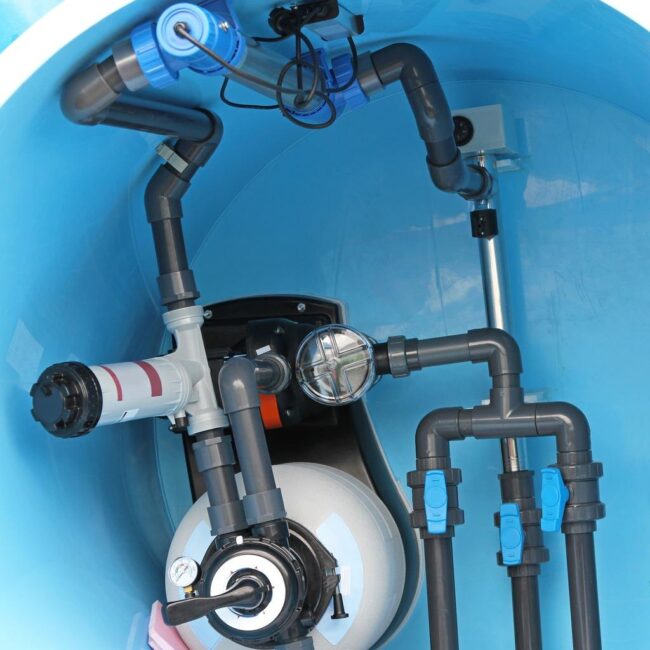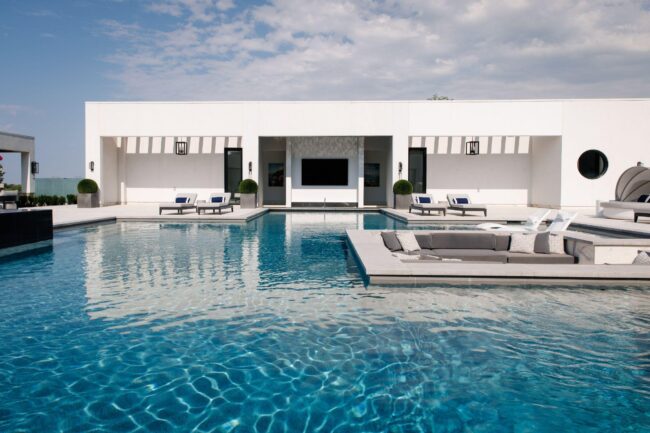Pool Construction Costs from Installation to Maintenance
When considering pool installation costs, many homeowners face the daunting challenge of understanding the various financial implications involved. The excitement of adding a personal oasis in the backyard can quickly turn into concern once the potential costs come into view. With a myriad of options available, from the size and shape of the pool to the materials used, it’s easy to become overwhelmed by the choices and their corresponding expenses. The thrill of summer days spent lounging by the pool can become overshadowed by the fear of unexpected costs.
Specifically, when discussing pool installation costs in the GTA, it’s essential to grasp not only the initial investment but also the ongoing expenses associated with maintenance and upkeep. From navigating local regulations to accounting for seasonal weather challenges, homeowners need to be well-prepared for every aspect of pool ownership. However, with the right information and planning, you can turn this investment into a rewarding reality. By understanding the key factors that influence costs and adopting strategic management practices, you can create your dream backyard retreat without compromising your financial stability.
Pool Size and Shape
The size and shape of your pool will significantly impact the overall cost. Larger pools require more materials and labour, increasing the price. Therefore, it’s important to consider how the pool will be used and how many people you expect to accommodate regularly. Similarly, custom shapes or designs can also add to the expense. While a unique design can make your pool stand out, it may also involve complex engineering and construction techniques, driving up costs. Weighing the benefits of a custom design against your budget is crucial.
Material Choices
The type of material you choose for your pool lining will affect both the initial cost and the long-term maintenance expenses. Common options include vinyl, fibreglass, and concrete, each offering distinct advantages and drawbacks. Understanding these can help you make an informed decision.
- Vinyl Liner Pools: These are generally the most affordable option, but they may require liner replacement every 5-10 years. This can lead to additional long-term costs despite the lower initial investment. However, vinyl pools offer a smooth surface and come in a variety of patterns and colours.
- Fibreglass Pools: These are known for their durability and low maintenance, but installation can be more expensive. They are pre-molded and quick to install, reducing labour costs. Fibreglass pools also resist algae growth due to their non-porous surface, which helps in maintaining water quality.
- Concrete Pools: Offer the most customization and are extremely durable, but they require more maintenance and tend to be the most expensive to install. They allow for a variety of finishes such as plaster, pebbles, or tiles, and can be easily modified in shape and depth.
Additional Features
Adding features like a spa, waterfall, or custom lighting will increase your pool’s cost. While these features enhance the pool’s aesthetics and functionality, they also contribute to a higher initial investment. Additional amenities such as heating systems or saltwater chlorinators can add comfort and convenience, but also come with their own set of costs for installation and maintenance. It’s important to prioritize features that align with your lifestyle and budget, ensuring you get the most value and enjoyment from your pool.
Pool Installation Costs in the GTA

The Greater Toronto Area has its unique set of challenges and costs when it comes to pool installation. From navigating local regulations to dealing with the region’s climate, understanding these factors can help you prepare for the financial aspects of pool construction. Here are some key considerations:
Permits and Regulations
In the GTA, you’ll need to obtain the necessary permits before beginning construction. These permits ensure that your pool complies with local safety and zoning regulations. Failing to acquire the right permits can lead to fines and delays, so it’s crucial to start this process early. The cost of permits can vary, so it’s wise to check with your local municipality. Engaging with a knowledgeable contractor who understands local requirements can streamline the process and prevent potential issues.
Site Preparation
Preparing the site for your pool can be a significant expense, especially if your backyard requires extensive grading or landscaping. Factors such as soil type, drainage, and accessibility will affect the cost. For instance, rocky or sloped terrains may require additional excavation or reinforcement, which can increase labour costs. Ensuring proper site preparation is critical to the longevity and safety of your pool, making it an area where cutting corners is not advisable.
Seasonal Considerations
The climate in the GTA can also influence installation costs. Pool construction is typically more expensive during peak seasons (spring and summer), and building during off-peak times might save you some money. However, off-peak construction may come with its own challenges, such as weather delays. Additionally, contractors may offer discounts or have more availability during the fall and winter months, allowing for better planning and potentially faster project completion.
Ongoing GTA Pool Maintenance Costs

Once your pool is installed, ongoing maintenance is essential to keep it in top condition. Proper upkeep not only ensures a safe swimming environment but also extends the lifespan of your pool, protecting your investment. Here’s what you should budget for:
Regular Cleaning and Chemical Balancing
Maintaining clean, balanced water is crucial for both the pool’s longevity and the swimmers’ health. Regularly testing and adjusting the water’s pH levels, chlorine, and other chemicals is necessary. Neglecting these tasks can lead to water quality issues, such as algae growth or equipment damage. You can do this yourself or hire a professional service. While professional services add to the cost, they provide expertise and convenience, allowing you to enjoy your pool without the hassle of regular maintenance.
Opening and Closing the Pool
In the GTA, where winters can be harsh, you’ll need to close your pool at the end of the swimming season and open it again in the spring. This process involves cleaning, draining, and covering the pool, as well as refilling and rebalancing the chemicals when reopening. Properly winterizing your pool can prevent damage from freezing temperatures, which can lead to costly repairs. Hiring professionals for opening and closing services ensures that these tasks are done correctly and efficiently.
Equipment Maintenance
Your pool’s filtration system, pump, and heater will require regular maintenance and occasional repairs. Regular checks and servicing can prevent small issues from becoming major problems. Investing in high-quality equipment initially can reduce these costs over time, but budgeting for potential repairs is wise. Keeping an eye on equipment performance and addressing issues promptly can save money in the long run.
Long-term Repairs and Upgrades
Over time, you may need to repair or replace parts of your pool, such as the liner, tiles, or decking. Planning for these long-term costs can prevent unexpected financial burdens. Upgrading to more efficient systems or materials can also provide long-term savings and improve the pool’s functionality and aesthetic. Establishing a maintenance schedule and setting aside a contingency fund for repairs and upgrades can provide peace of mind and financial stability.
Tips for Managing Pool Costs

Building and maintaining a pool is a significant investment, but there are ways to manage the costs effectively. By implementing strategic approaches, you can enjoy the benefits of a pool without undue financial strain:
- Plan and Budget: Before starting, outline a detailed plan and budget that includes installation, maintenance, and potential repairs. A well-thought-out plan helps prevent overspending and allows for adjustments as needed.
- Consider Energy Efficiency: Invest in energy-efficient equipment to reduce operating costs over time. Options such as solar heaters or variable-speed pumps can lower utility bills and are better for the environment.
- Regular Maintenance: Consistent maintenance can prevent costly repairs and extend the lifespan of your pool. Establishing a routine helps catch potential issues early and keeps your pool in optimal condition.
- Shop Around: Get multiple quotes from contractors and service providers to ensure competitive pricing. Comparing prices and services ensures you get the best value without sacrificing quality.
- Consider DIY Projects for Minor Maintenance: Taking on simple tasks yourself, such as skimming the pool surface or maintaining the landscaping around the pool, can save money. Understanding which maintenance tasks are manageable for you can help reduce ongoing inground pool costs.
- Take Advantage of Off-Season Promotions: During the off-peak seasons, many contractors offer promotions or discounts on installation and maintenance services. Keeping an eye out for these deals can reduce the overall pool installation costs in the GTA, allowing you to save on both initial and ongoing expenses.
- Implement a Monitoring System for Usage and Maintenance: Investing in monitoring systems to track water quality and equipment performance can prevent bigger issues down the line. By staying proactive, you can avoid costly repairs and ensure that the total inground pool costs remain manageable over time.
Pool Installation Professionals in the GTA
Selecting the right pool installation professionals in the Greater Toronto Area is crucial for ensuring a smooth and successful project. With a variety of contractors available, it’s important to do your research and choose a team that is experienced, reputable, and familiar with local regulations. A skilled contractor will not only provide quality workmanship but also guide you through the complexities of the installation process, from obtaining permits to selecting the best materials for your specific needs.
Moreover, collaborating with professionals who have expertise in pool installation can save you time and potential headaches, ensuring your new pool meets all safety and design standards. They can also offer valuable insights into maintaining your pool efficiently and effectively, helping you manage long-term costs.
When considering a pool installation in the GTA, take the time to compare multiple contractors, read reviews, and ask for recommendations to find the ideal partner for your project. Investing in a trusted professional will lead to a rewarding addition to your home that enhances both your lifestyle and property value.
Contact our team of pool installation experts today to discuss your vision and start planning your dream pool!
